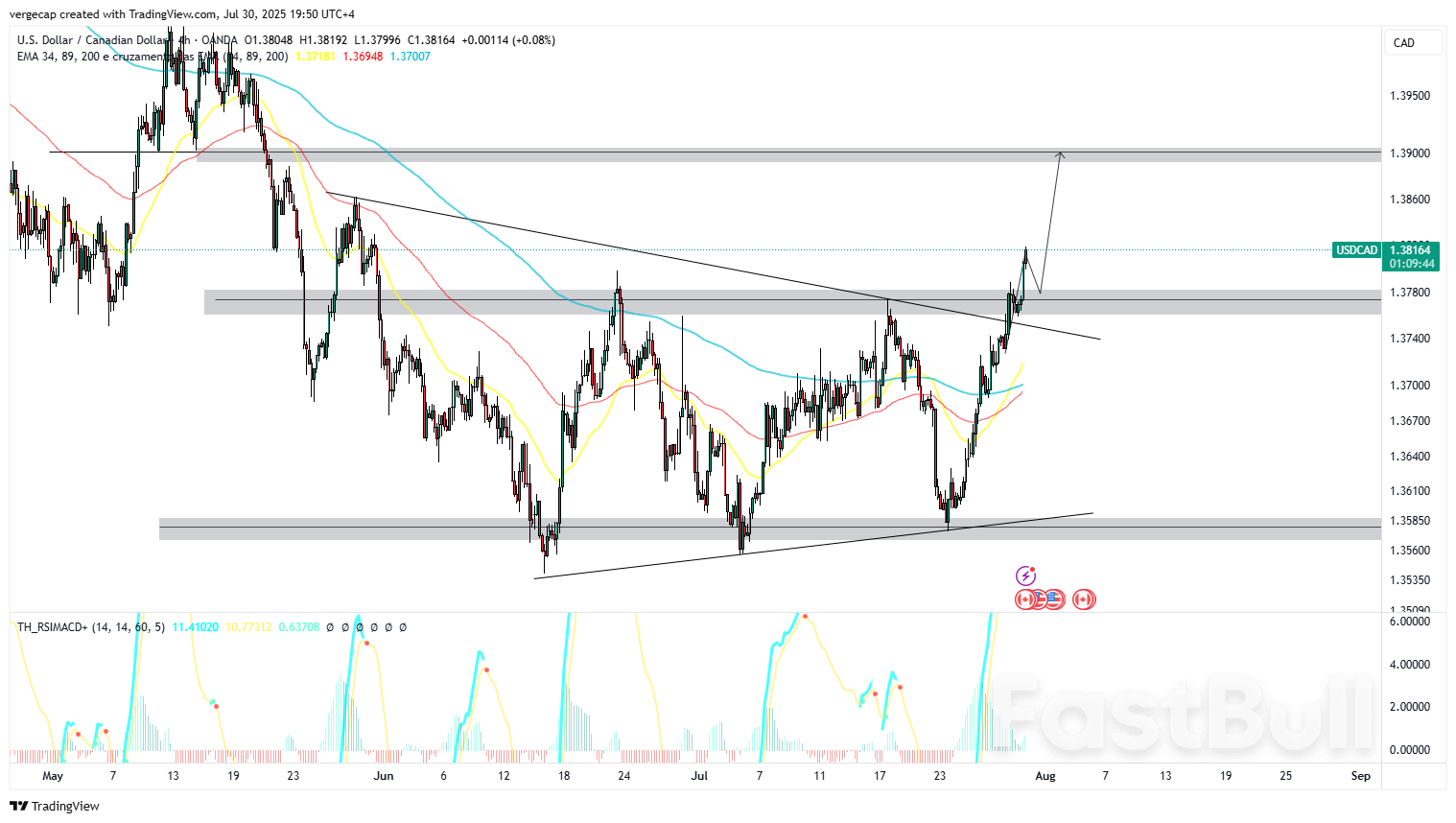The Canadian Dollar continued its downward slide on Wednesday, falling for the fifth straight session against the US Dollar as the Greenback's rally shows no signs of slowing. By mid-session, USD/CAD had climbed above 1.3810, its highest level since May 30, driven by a combination of firm US macroeconomic data and a cautious monetary policy stance from the Bank of Canada. The pair is now up more than 0.70% so far this week, solidifying the momentum behind the recent breakout.
At the heart of the Loonie’s struggles was the Bank of Canada’s decision to leave its benchmark interest rate unchanged at 2.75%, a move that had been broadly expected by markets. But beyond the rate hold, the central bank’s policy statement struck a notably cautious tone. While acknowledging signs of economic moderation, the BoC remained focused on lingering inflationary risks, especially in core prices, which continue to hover above 3%—well beyond the central bank’s 2% target.
The BoC emphasized that inflation remains stubborn due to resilient consumer spending and ongoing wage growth, both of which are keeping price pressures elevated. The bank’s messaging suggests that any policy easing is unlikely in the immediate term, with officials preferring to assess incoming data before making their next move. This data-dependent posture has left market participants speculating that the BoC may delay rate cuts until later this year, despite growing evidence of a domestic economic slowdown.
Notably, the central bank also highlighted external risks, including growing uncertainty around trade relations with the United States. The BoC pointed to a lack of clarity in US trade policy, warning that while some elements have become more defined, negotiations remain fluid and the threat of new sector-specific tariffs persists. The statement underscored the unpredictability of US trade actions and their potential impact on Canadian exports and broader economic confidence.
Despite the BoC’s cautious rhetoric, it did not entirely rule out the possibility of future rate cuts. According to a Reuters poll conducted ahead of the decision, 18 out of 28 economists forecast that the BoC would begin lowering rates in September, with an expected 25 basis point reduction to 2.50%. The poll also revealed that over 60% of respondents believe at least two more cuts could follow in 2025, with a handful projecting as many as three additional reductions before the end of next year. This outlook keeps alive expectations of a gradual easing cycle, even as policymakers stress the need for prudence.
In contrast, the US Federal Reserve continues to benefit from a spate of strong economic indicators that have reinforced the market’s confidence in the resilience of the US economy. Recent data, including stronger-than-anticipated job creation and persistent consumer demand, has cast doubt on the likelihood of near-term rate cuts by the Fed. Although the US central bank is expected to leave rates unchanged later on Wednesday, all eyes will be on Fed Chair Jerome Powell’s press conference and the updated Summary of Economic Projections, which could offer fresh insights into the Fed’s inflation and growth forecasts.
The divergence in policy trajectories between the BoC and the Fed has created a fertile backdrop for USD/CAD gains. As investors adjust to the growing likelihood that US interest rates will remain elevated for longer, capital continues to flow into the Dollar, amplifying downside pressure on currencies like the Canadian Dollar, which are closely linked to commodity exports and global trade sentiment.
Technical Analysis
From a technical standpoint, the USD/CAD pair has delivered a significant bullish breakout, pushing decisively above the psychologically important 1.3800 level. The move confirmed the resolution of a multi-session triangle formation that had constrained price action since late May. The breakout was bolstered by prior bullish divergence on momentum indicators, signaling a shift in market structure and confirming that buyers have taken control.
The confirmation of this technical breakout opens the door to further gains, with the next upside target seen near 1.3900. Should the pair retest the 1.3800 zone—a level that now acts as key support—it may offer another buying opportunity for traders seeking to join the bullish trend. Momentum continues to favor the upside, particularly in light of the macroeconomic narrative that remains firmly supportive of Dollar strength.
TRADE RECOMMENDATION
BUY USDCAD
ENTRY PRICE: 1.3810
STOP LOSS: 1.3700
TAKE PROFIT: 1.3900













